Last updated on April 29, 2024

Dandân | Illustration by Drew Tucker
There are tons of things to love about Magic. Maybe you’re like me and get super hooked on the game’s lore and settings; maybe you’re like my friends who always try to find ways to build the more optimal decks; maybe you like the mechanical complexity, the competitiveness, the collectable aspect, or even the artwork.
Whatever the reason, you probably have one or two formats that you enjoy more than the others. In my case, it’s definitely Commander. I’ve pretty much always preferred playing multiplayer matches, and EDH opened up a new world for me.
There was a time before I knew about the format when my friends improvised multiplayer games using 60-card decks. They usually worked fine enough, but we eventually decided we wanted to try new possibilities and ways of playing. We decided to homebrew a format called Juggernaut, where one player had to face off against three or four others. No, we didn’t know about Archenemy then.
Our homebrew format was kind of messy and unbalanced, but it was fun. Fun enough that I still remember it over 10 years later. Magic’s a game that can be modified a lot as long as you and your friends all agree on the new rules. You can create formats or even entirely new ways to use the cards; remember, EDH was an unofficial format for around two decades.
This open-endedness is a highly positive thing about Magic, and I dare say The Source user Nick Floyd also shares this thought. After all, they created Dandân, the format we’ll be talking about today.
I’m no Rhystic Studies, so if you want to see a lovely telling of how the format first showed up and its gradual rise to recognition, go watch his absolutely wonderful video.
Let’s now take a look at the format and how it works!
What Is Dandân?
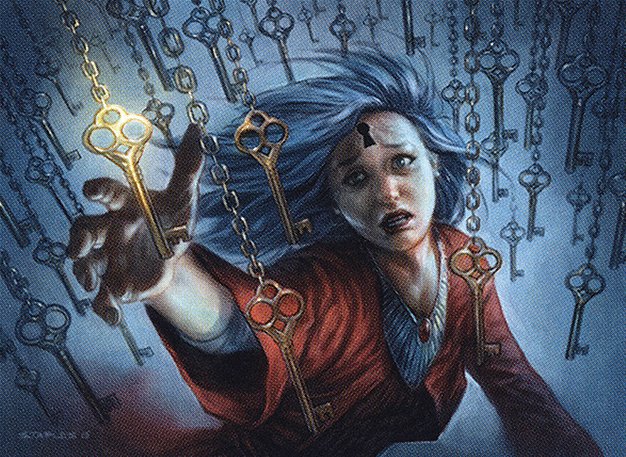
Memory Lapse | Illustration by Greg Staples
To put it as concisely as possible, Dandân is a format where two players share a single 80-card deck and its graveyard. The rules are otherwise normal: Both players have 20 life, and you lose when your life total reaches 0 or you’re milled out.
The format revolves around the eponymous Dandân, a not-that-great common from Arabian Nights. The shared deck runs a whopping 10 copies of this card, and it’s the only creature in it. The other notable card in the deck is Memory Lapse, of which there are eight copies. These two cards are what gave the format its original name: Forgetful Fish. The rest of the deck includes different blue spells, mostly instants or sorceries aimed at interacting with the stack, the top of the library, or the fish itself.
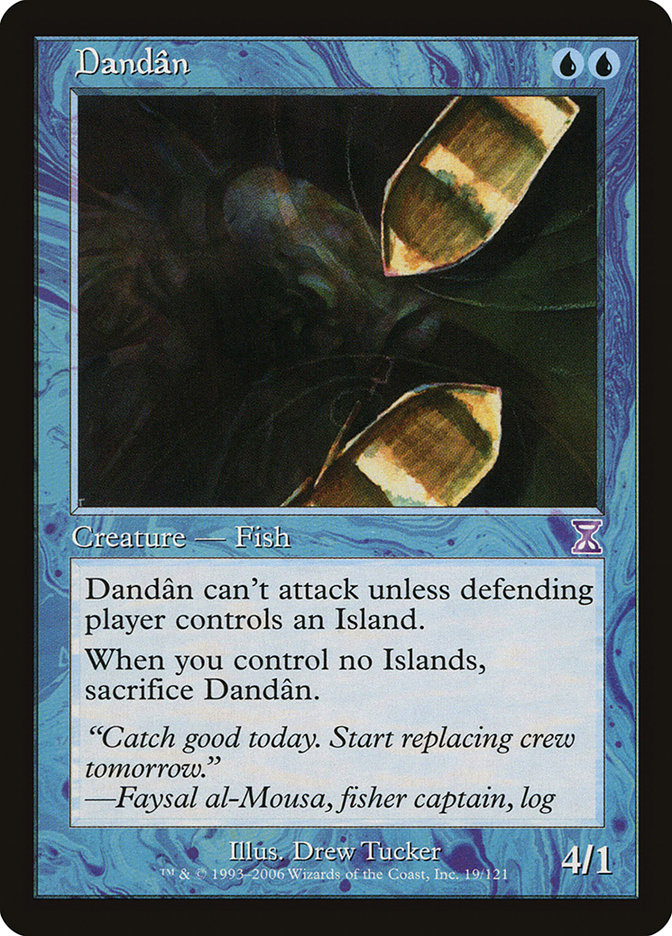
Dandân represents the only damage source in the deck. The format revolves around it, after all. This makes it extremely important since having at least one makes it so that you can start draining out your opponent’s life.
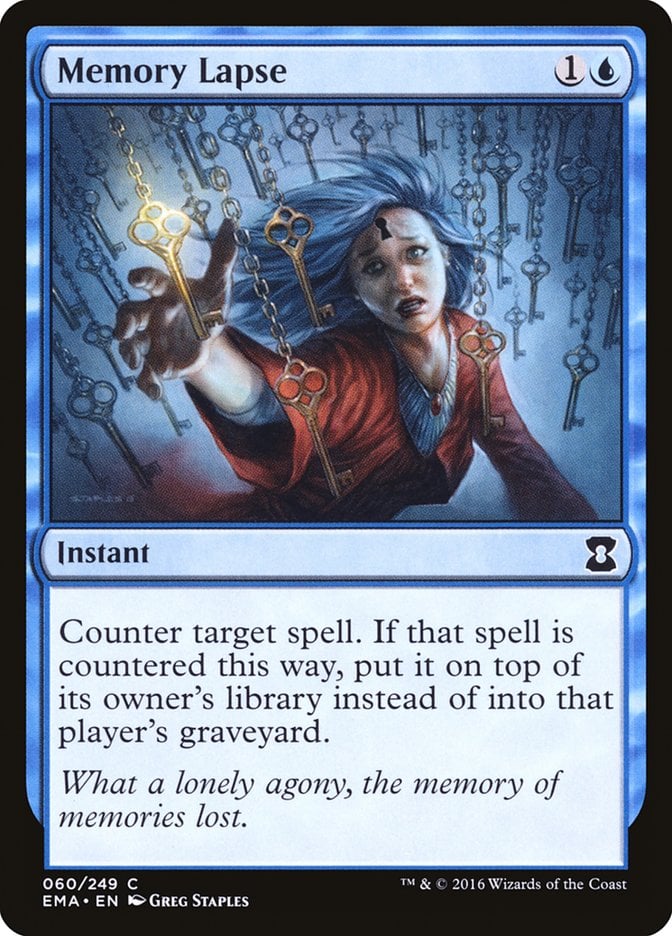
The other main card in the deck, Memory Lapse, generates a really interesting interaction since both players share a single deck. Pretty much everything you do needs to take into account the fact that your opponent could have a Memory Lapse in hand, which turns any advantageous thing you play into an advantage for your opponent. Likewise, you can use it to pretty much steal any card you need away from the stack. But don’t play it at just any time, since the card you counter will be the next card drawn.
This format forces players to be very mindful of whatever’s on the stack or on the top of the deck, and anything they may have seen in their opponent’s hand. It’s essentially a format that necessarily teaches players how to properly play blue decks.
Who Is Dandân For?
Dandân is honestly for anyone. If you’re a more casual or inexperienced player, the format can be a great way of learning how to incorporate tempo and control mechanics into your gameplay. If you’ve been playing Magic for years and consider yourself competitive or experienced, Dandân is kind of like a game of chess: You’re pretty much always aware of what your opponent can do, the game pieces are technically always the same, and you need to constantly be thinking several turns ahead.
This format can be a fun challenge for new and veteran players, plus it's super easy to carry around since you only need a single 80-card deck.
Dandân-Legal Sets
As far as I’m aware, all MTG sets are legal in Dandân. The format’s hyper-specific theme and gameplay makes it so that you don’t really need to outlaw any sets. I suppose you could technically say silver-bordered sets (Unfinity included) aren’t legal for this format since they pretty much go against what makes it what it is. Even so, if you want to add some wacky joke cards to your Dandân deck, you technically can.
Dandân Rules
The biggest rules differences between Forgetful Fish and other formats are the fact that you share a deck and graveyard with your opponent, and there being 10 copies of Dandân and eight of Memory Lapse. One other rule that can be applied is a modified mulligan that allows for one free mulligan at first to ensure the match won’t stall out right at the start.
Everything else is pretty much the same.
Dandân Ban List
Since this is a completely casual and unsanctioned format, there’s no official ban list. Even from unofficial sources, I was unable to find any ban lists. You could technically consider all creatures other than Dandân banned by default.
Same thing applies to any other permanents like artifacts or planeswalkers. Technically you can choose to add them in, but that's drifting away from what the format really is.
Where to Play Dandân?
As of right now, the only way to play the Forgetful Fish format is in real life. It’s a completely unofficial format, so Arena doesn’t have it, and as far as I know it hasn’t shown up in MTGO yet.
Dandân Decks
Most decks for the Dandân format are somewhat similar. Besides the necessary 10 Dandân and eight Memory Lapse, decks for this format only run instants and sorceries. And lands, obviously.
The instants and sorceries in these decks usually fit one of three categories: counterspells, ways to interact with the top of the deck, and “removal”.
In terms of a decklist to get started, the original decklist brewed up by Nick Floyd is a good primer.
Nick Floyd’s Forgetful Fish Deck

Supplant Form | Illustration by Adam Paquette
Creatures (10)
Dandân x10
Instants (36)
Accumulated Knowledge x4
Brainstorm x2
Crystal Spray x2
Dance of the Skywise x2
Insidious Will x2
Memory Lapse x8
Metamorphose x2
Mind Bend x2
Mystical Tutor x2
Predict x2
Ray of Command x2
Supplant Form x2
Unsubstantiate x2
Vision Charm x2
Sorceries (4)
Diminishing Returns x2
Mystic Retrieval x2
Lands (32)
Halimar Depths x2
Island x18
Izzet Boilerworks x2
Lonely Sandbar x2
Mystic Sanctuary x2
Remote Isle x2
Svyelunite Temple x2
Temple of Epiphany x2
This is the deck that gave birth to the format. Other decks have expanded upon the original idea by swapping out some of the instants for things that maybe fit their playstyle or preferences better, but this is ultimately the root of the entire format.
Getting Started With Dandân
The best part about Dandân is the fact that you don’t really need to consider any kind of meta when building your deck. It simply needs to work within the standards of the format, and you’re good to go.
But which types of cards should you add to your Forgetful Fish deck?
In terms of lands, you need at least 20 islands; whether they’re basic lands or not doesn’t matter as long as they keep your Dandân alive.
Aside from that, lands with cycling are also pretty good in this format since they allow you to manipulate the top of the deck. Most decks also run a couple of Izzet Boilerworks and Temple of Enlightenment to fit a couple “multicolored” cards in the deck. Plus, the Temple gives you a free scry.
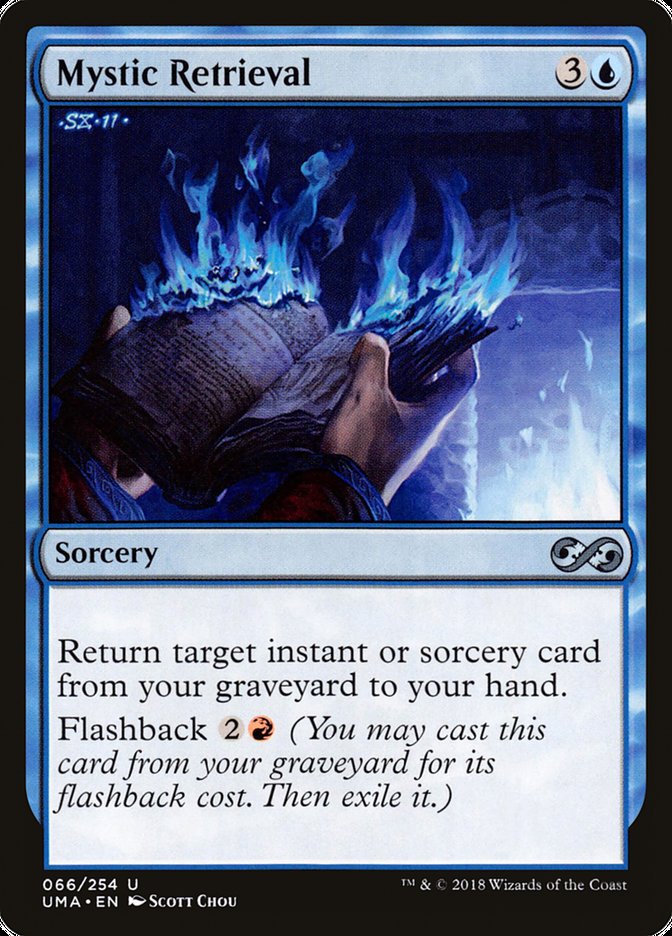
Izzet lands are there to fit Mystic Retrieval into the deck. Considering how this format is dependent on instants and sorceries, this card is ideal to have. Plus, you can technically pay the flashback cost even if your opponent was the one who played the spell originally.
Things like Supplant Form or Unsubstantiate also hold a place in Dandân. They not only serve as temporary removal for your opponent’s Dandân but also as a way to force them to play it again, which opens up the possibility of stealing it with a Memory Lapse. This type of dynamic is pretty much what the entire format is based on.
Other types of cards that are pretty ubiquitous to Forgetful Fish are those like Crystal Spray and Mind Bend. These are your main removal spells. Since Dandân needs its owner to have islands in play to stay alive, you simply swap the word “island” in that rules text for any other land type, and the fish is gone. Once again, this is pretty much the most mono-blue way to play Magic I’ve ever seen. Even removal works in a convoluted way.

The final card that’s pretty much a staple in Dandân is Diminishing Returns. Considering you’re playing with a shared deck, this serves as a way to pretty much reset the deck if your opponent is about to mill you out, or if all of the deck’s Dandâns are in the graveyard. You also have the one-in-a-billion chance that the 10 exiled cards are all or most of the fish in the deck, but that’s highly unlikely.
Dandân Products
There are no products that revolve around the Dandân format or that even really work for it. This is such a highly specific format that if Wizards decided to cash in on it, they could only sell some kind of base deck based on Nick Floyd’s.
In any case, these don’t exist, so you simply need to buy the singles and that’s that. If you want some extra bling, you can carry the deck around with two dice, either spindown life counters or six-sided dice. Since damage in this format is done in increments of 4, five hits is all that’s needed to take down an opponent; just use a regular die to count each of the hits, and once you’re at five, you’re done.
Dandân Communities
As far as I’m aware, there aren’t any specific social media groups or forums that specifically revolve around this format. MTG’s subreddit has a couple threads here and there discussing the format, so you can always go there to find a community to share with.
You can also hit up the Draftsim Discord if you’re looking for a Magic-based community.
Since this is pretty much a meta-less format, it makes it somewhat harder to build a thriving online community around it. You can discuss deck changes and card preferences with others, but that’s about it.
Wrap Up

Crystal Spray | Illustration by Jeff Miracola
I’ve been wanting to try Dandân out since I saw Rhystic Studies’ video on it. The format looked great, and the video made me appreciate Nick Floyd’s creativity, something I maybe never would’ve even discovered. I think it’s a great way to keep playing while you’re in between matches or if two players were defeated in an EDH game that doesn’t seem to be ending any time soon. It’s easy to carry around, it’s fun, and it even serves as training to understand tempo and control better.
But enough of what I think. What’s your opinion on Dandân? Do you have a decklist for it? What other fan-made formats would you want us to talk about? Leave a comment letting us know! And while you’re here, make sure to visit our Discord server. You’ll find an amazing community of MTG fans to share your hobby with!
That’s all from me for now. Have a good one, and I’ll see you next time!
Follow Draftsim for awesome articles and set updates: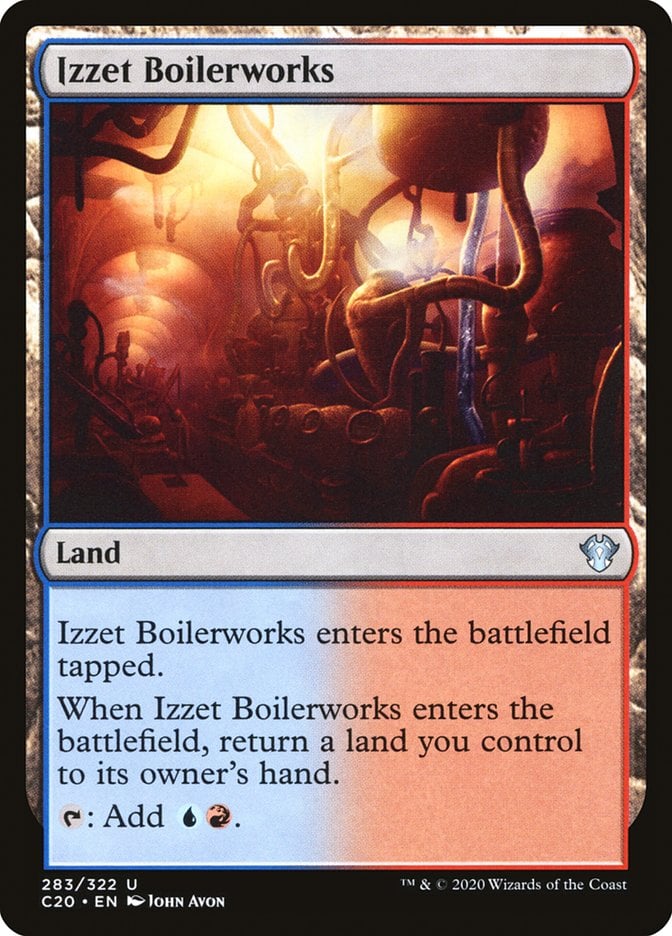

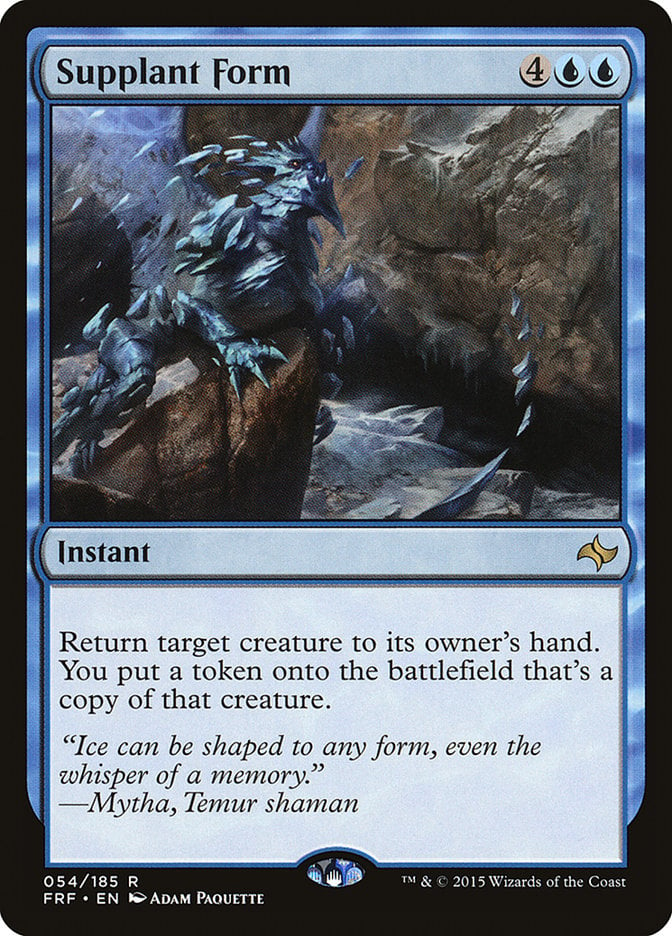
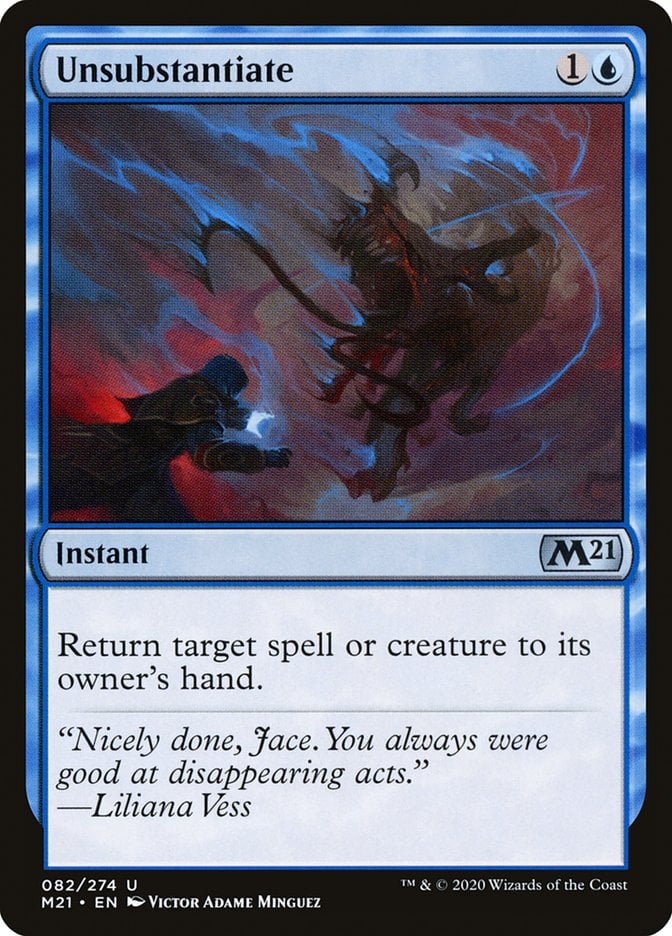
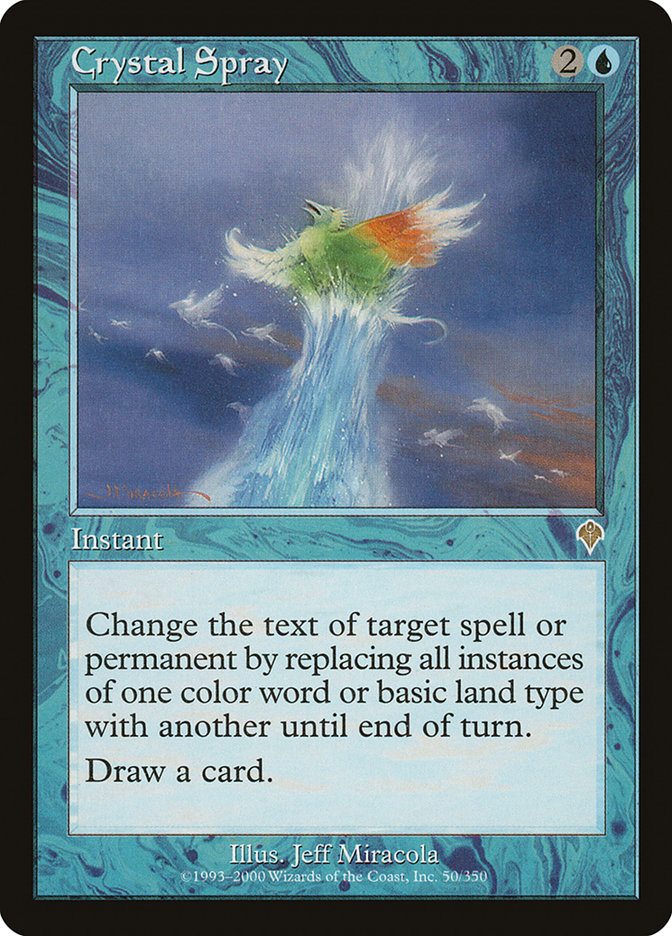
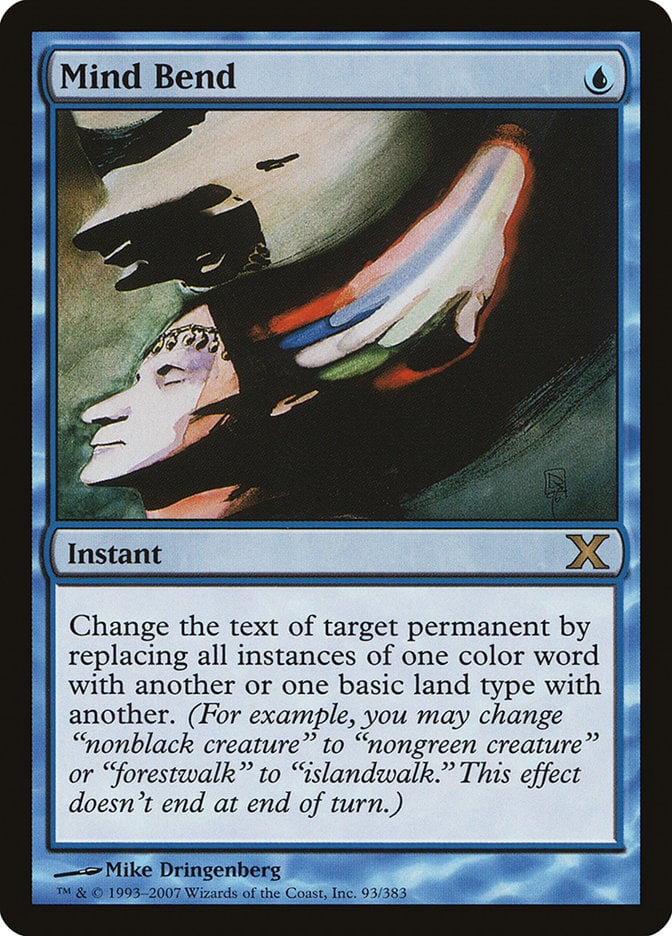
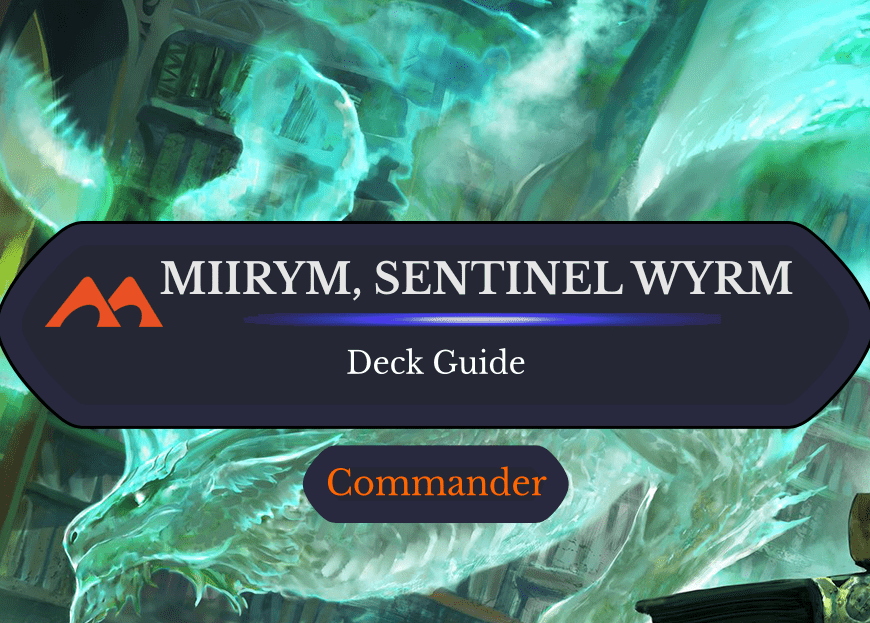
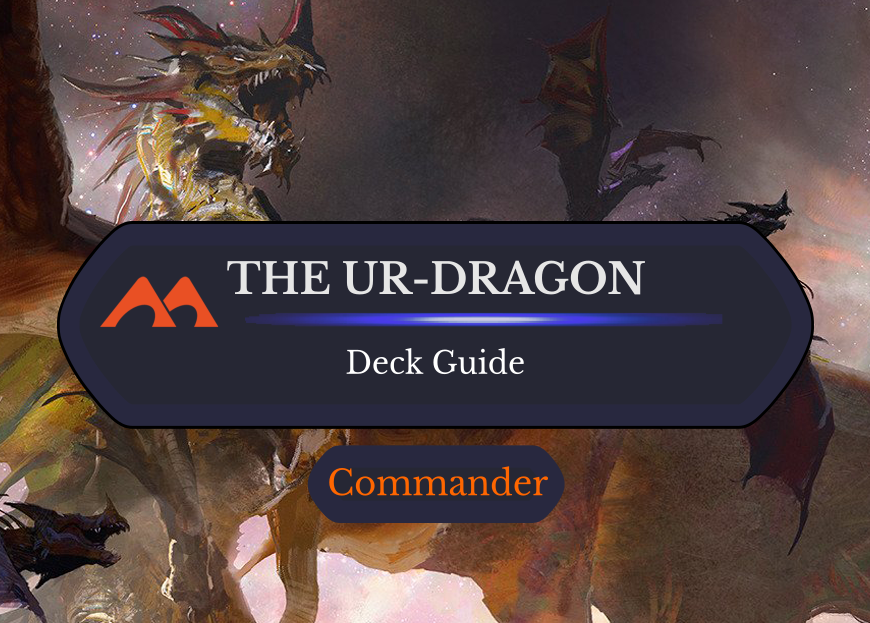
Add Comment